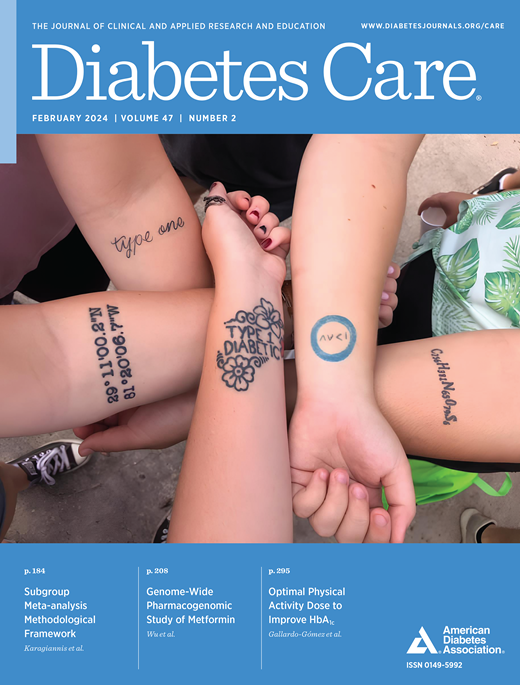Capillary Ketone Level and Future Ketoacidosis Risk in Patients With Type 1 Diabetes Using Sodium–Glucose Cotransporter Inhibitors
IF 16.6
1区 医学
Q1 ENDOCRINOLOGY & METABOLISM
引用次数: 0
Abstract
OBJECTIVE We aimed to determine if routine capillary blood ketone testing on well days predicts future diabetic ketoacidosis (DKA) in type 1 diabetes (T1D) using sodium–glucose cotransporter inhibitors (SGLTi). RESEARCH DESIGN AND METHODS We examined previously collected data from empagliflozin-assigned participants in a T1D trial that included weekly fasted ketone levels. Over 6–12 months, ketone levels were subdivided into 28-day periods, and the outcome was subsequent adjudicated DKA or severe ketosis. RESULTS Among 1,194 participants, 325 had 49 DKA and 568 severe ketosis events. On-treatment maximum ketone levels were higher in the 28 days before an outcome compared with levels in those without an outcome, with area under receiver operating characteristic curve of 0.76 (95% CI 0.71–0.82). Maximum ketone level ≥0.8 mmol/L had sensitivity of 66.0%, specificity of 79.6%, and diagnostic odds ratio of 7.6. CONCLUSIONS Routine surveillance of capillary ketone levels in T1D using SGLTi may represent a DKA mitigation strategy and implies a potential threshold for continuous ketone monitoring.使用钠-葡萄糖共转运蛋白抑制剂的1型糖尿病患者的毛细酮水平和未来酮症酸中毒风险
目的:我们旨在确定使用钠-葡萄糖共转运蛋白抑制剂(SGLTi)进行1型糖尿病(T1D)常规毛细血管血酮检测是否能预测未来糖尿病酮症酸中毒(DKA)。研究设计和方法我们检查了先前在一项T1D试验中从恩格列净分配的参与者收集的数据,包括每周禁食酮水平。在6-12个月的时间里,酮水平被细分为28天的周期,结果是随后判定DKA或严重酮症。结果在1194名参与者中,325人有49例DKA和568例严重酮症事件。治疗前28天的最大酮水平高于无结果组,受试者工作特征曲线下面积为0.76 (95% CI 0.71-0.82)。最大酮水平≥0.8 mmol/L敏感性66.0%,特异性79.6%,诊断优势比7.6。结论:使用SGLTi对T1D患者的毛细血管酮水平进行常规监测可能是一种缓解DKA的策略,并暗示了持续监测酮的潜在阈值。
本文章由计算机程序翻译,如有差异,请以英文原文为准。
求助全文
约1分钟内获得全文
求助全文
来源期刊

Diabetes Care
医学-内分泌学与代谢
CiteScore
27.80
自引率
4.90%
发文量
449
审稿时长
1 months
期刊介绍:
The journal's overarching mission can be captured by the simple word "Care," reflecting its commitment to enhancing patient well-being. Diabetes Care aims to support better patient care by addressing the comprehensive needs of healthcare professionals dedicated to managing diabetes.
Diabetes Care serves as a valuable resource for healthcare practitioners, aiming to advance knowledge, foster research, and improve diabetes management. The journal publishes original research across various categories, including Clinical Care, Education, Nutrition, Psychosocial Research, Epidemiology, Health Services Research, Emerging Treatments and Technologies, Pathophysiology, Complications, and Cardiovascular and Metabolic Risk. Additionally, Diabetes Care features ADA statements, consensus reports, review articles, letters to the editor, and health/medical news, appealing to a diverse audience of physicians, researchers, psychologists, educators, and other healthcare professionals.
 求助内容:
求助内容: 应助结果提醒方式:
应助结果提醒方式:


